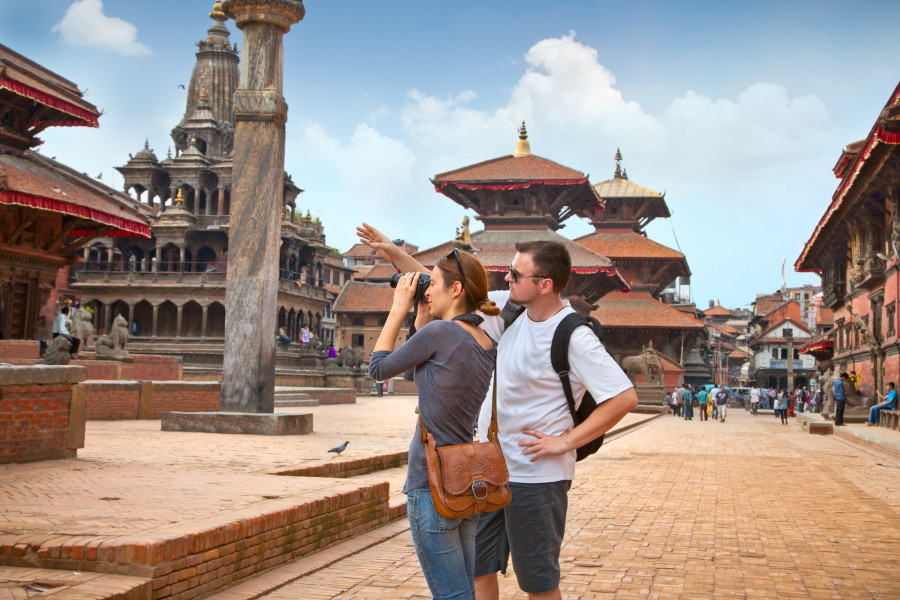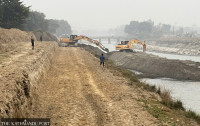National
More tourists are visiting the country, but they are spending less money
Tourist arrivals crossed the coveted one-million mark for the first time in 2018, with 1.17 million foreign visitors streaming into the country, but their spending plummeted to a seven-year low.
Sangam Prasain
Tourist arrivals crossed the coveted one-million mark for the first time in 2018, with 1.17 million foreign visitors streaming into the country, but their spending plummeted to a seven-year low.
According to statistics from the Tourism Ministry, expected to be released next week, the average spending per tourist per day dropped to $44, the lowest in seven years. The average spending was $54 per day in 2017.
In 2003, during the height of the Maoist insurgency, per day spending of tourists was at a record $79.1.
Data shows that Nepal received 1.17 million tourists last year and earned a record Rs70 billion in foreign exchange. The previous year, the country had welcomed 940,218 foreign visitors and earned Rs65.8 billion.
This significant increase in visitors was not matched by a similarly significant increase in incomes, leading economists and the tourism industry to wonder if Nepal is turning into a destination for budget travellers.
According to one senior Tourism Ministry official, the number of tourists entering Nepal has increased significantly, as around 165,000 tourists enter Nepal from Bhairahawa to visit Lumbini, the birthplace of the Buddha.
However, they do not appear to be spending any money there. This is because nearly 90 percent of foreigners visiting Lumbini spend less than an hour in the area before moving on.
Foreign tourists usually stay for an average of 13 days in Nepal, but most travellers visiting Lumbini barely stay for 30 minutes, according to a study conducted in 2013. The study, titled ‘Visitors Survey and Observation’, revealed that 72.6 percent of visitors spent only half an hour sightseeing in Lumbini.

“Nepal’s tour operators have failed to capitalise on the Buddhist pilgrimage,” said the official. “All tour packages are dealt by Indian operators and Nepal gets almost nothing from the visitors entering from Bhairahawa,” he said. Sri Lanka, Thailand and Myanmar are among top 10 source markets to Nepal and more than 90 percent of tourists from these countries come overland.
According to the official, another large group supplementing tourist numbers is Non-resident Nepali, most of whom hold foreign passports. Nepal received 91,000 tourists from the US last year, a significant jump from 2017, and most of them were Non-resident Nepalis holding an American passport, according to the Tourism Ministry. These NRNs do not spend foreign currency, as they prefer to deal in local currency.
However, according to economist Chandan Sapkota, there are two additional key factors responsible for the drop in spending—Nepal’s tourism products and services have remained the same for long, and Chinese tourists are bypassing our financial system.
Nepal’s focus on increasing numbers has meant that its targets are essentially budget tourists, said Sapkota. “Given the infrastructure we have and the quality of services we offer, the value for money is much lower for tourists who don’t mind spending a bit more for better services,” he said.
However, a burgeoning issue concerns online payment methods, including those employed primarily by the Chinese. Payments by Chinese tourists via WeChat or Alipay are growing in Nepal, and a significant portion of businesses in Thamel accept payments via two of China’s most popular mobile payment platforms.
According to Sapkota, Indian tourists are also increasingly using their own online payment systems, like Paytm, but not as aggressively as the Chinese.
These apps make payments easier and more convenient for Chinese tourists, but such transactions bypass formal banking channels. Transactions are made from one Chinese account to another, which means the money technically does not enter Nepal.
The Chinese are the second largest group of visitors to Nepal, with arrivals of 153,000 last year, but technically, their spending does not benefit the industry, market insiders say.
Two things need to happen, said Sapkota. First, tourism infrastructure needs to be upgraded. Not only new airports but also visa processes, travel packages, airline and road safety, security and clean environment—all need an overhaul. Second, to ensure value for money for tourists, human resources also need an upgrade.
“This is not new,” said tourism entrepreneur Basanta Raj Mishra. “Unhealthy competition in the industry has resulted in low-priced tour packages and this has affected the country’s earnings.”
Nepal cannot adopt the Bhutan model of high-value tourism, but we can establish a control mechanism, said Mishra.
However, some tourism entrepreneurs suspect that many hotels and resorts undervalue their incomes to lower taxes. The hospitality industry has reported strong growth but incomes from tourism are decreasing, they said. One tax official in Pokhara told the Post that the lake city has at least 700 hotels and restaurants doing good business but tax payments are not proportional.
Nepal Rastra Bank officials have repeatedly warned the tourism industry in this regard, but the problem remains, according to tourism entrepreneurs.
Laxmi Prapanna Niraula, Nepal Rastra Bank spokesperson, said that hotels and other agencies that have been given the licence to deal with foreign exchange send their reports on the same day of the transaction. “It is unlikely that foreign currency is out of our system as we have stringent foreign exchange regulations,” he said.




 9.12°C Kathmandu
9.12°C Kathmandu















